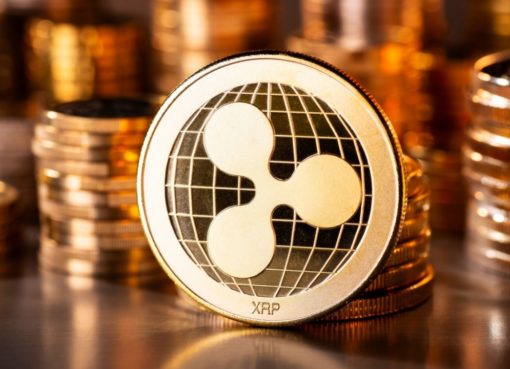While the SEC states its mission is to protect investors, there are questions about its methods and motives. This piece unravels the SEC’s structure, balance sheet, and notable interactions with cryptocurrency entities, providing an insightful and comprehensive look at a complex issue.
Disclosure: The views and opinions expressed here belong solely to the author and do not represent the views and opinions of crypto.news’ editorial.
Hailed as a beacon of free market principles, the cryptocurrency market is going through an intriguing phase. It’s an era where the invisible hand of the market meets the tangible fist of regulation.
The US Securities and Exchange Commission (SEC) sits at the eye of this storm. The regulator finds itself walking a tightrope – protecting the interests of investors while navigating the rapidly evolving crypto landscape.
The irony, however, lies in its self-serving approach to defining securities and enforcing fines. Is the SEC protecting investors or padding its balance sheet? Let’s dive deeper.
SEC’s hunger for enforcement
Before we go further, let’s decrypt the organization of the SEC. The regulator operates under a committee led by the chairman, currently led by Gary Gensler, and four members, directing the operations of several departments, offices, and sub-regional offices.
At the heart of this bureaucratic behemoth are the Enforcement and Examination departments, a duo that seems to dominate all others in importance.
Take a look at SEC’s funding, and you’ll see a spicy cocktail of the financial budget, transaction, and application fees, and here’s the cherry on top – confiscated income.
It’s fascinating that if there are no victims to compensate, this forfeited income fuels the investor protection fund, the whistleblowers, and SEC’s investigative apparatus. If that doesn’t pique your curiosity, you must be a bot!
SEC’s balance beam act
From a financial standpoint, the SEC is rather thriving. According to its annual report, for the 2022 fiscal year, the total assets of the SEC surged from $12.2 billion to $14.1 billion, an uptick of a cool $1.9 billion.
Most of these assets were composed of confiscated income. Now you’re seeing why enforcement actions are so crucial, aren’t you?
In a brilliant stroke of financial ingenuity or frightening reality, the confiscated income has become a “pillar income” for the SEC.
Is it any wonder then that the net expenditure of the Enforcement and Inspection divisions is the highest, tallying to $1.75 billion, or 65% of the total spending?
More importantly, these expenditures translated into a 9% increase in enforcement actions from the previous year. After all, who wouldn’t love a good old enforcement action to inflate the balance sheet?
Rewards and enforcement: more than just a coincidence?
The spoils of these enforcement actions have not gone unnoticed. In the 2022 fiscal year alone, the SEC dispensed a whopping $229 million as rewards among 103 whistleblowers. For an organization keen to ramp up its headcount from 4,685 to 5,139, these figures reveal its strategic priorities.
One of the case studies from this ‘enforcement bonanza’ involves Coinbase, the crypto trading behemoth. In a quirk of fate, the regulator alleges that Coinbase was operating unlawfully while trading in registered securities despite having an SEC-approved IPO.
This could be a genuine attempt to protect investors or another enforcement maneuver to boost SEC’s revenue.
SEC and the crypto paradox: a look into the Coinbase case
Meanwhile, a new chapter in the history of cryptocurrencies unfolded in March 2023 when the US government, under the supervision of the SEC, used Coinbase to sell a significant amount of bitcoin (BTC).
This operation marked a peculiar paradox where the SEC, which routinely positions itself as a regulator, used a crypto exchange platform to facilitate a hefty profit.
The transaction involved liquidating 9,861.17 BTC, worth $217 million at the time of sale. This substantial bitcoin volume was part of a larger cache of 50,000 seized during the notorious Silk Road bust. This online black market dealt with illegal transactions, primarily through crypto.
Interestingly, the government also stated that the remaining seized BTC would be liquidated over time via public listings, implying an ongoing engagement with cryptocurrency platforms such as Coinbase.
However, the actions of the SEC present a perplexing contradiction. While it leverages Coinbase as a reliable platform to facilitate the sale of significant amounts of seized cryptocurrency, it also closely scrutinizes and regulates the same platform’s operations.
The situation raises some critical questions. Can the SEC continue to utilize Coinbase for these lucrative transactions while simultaneously scrutinizing its operations as potentially illegal? Isn’t there a contradiction in leveraging a platform one regulates for profit?
For the sake of investor protection, industry growth, and maintaining public faith, the SEC needs to clarify its stance and address any perceived double standards.
The road ahead: striking a balance
The road ahead is uncharted and full of potential pitfalls. As the cryptocurrency space continues to evolve, so must the SEC’s approach to regulation.
The SEC must adopt a more proactive approach, crafting comprehensive guidelines for cryptocurrencies and related products. This would provide much-needed clarity to innovators and investors, reducing the risk of future enforcement actions.
Additionally, the SEC must ensure its enforcement actions are genuinely protecting investors rather than serving as a mechanism to pad its balance sheet.
As such, the onus is on the SEC to strike the right balance, ensuring that its regulatory actions protect investors without stiffening the industry’s innovative potential.



